Migrants Stuck In Mexico Finally Allowed Into U.S.
Photojournal by Lexie Harrison-Cripps
Published on
On Thursday Feb. 25, the first residents of the migrant tent encampment in the Mexican city of Matamoros were finally allowed to cross the border to the United States. Twenty-seven people, some of whom had requested asylum as many as 18 months ago but were forced to wait in Mexico under former President Donald Trump’s Migrant Protection Protocols (MPP) program, were finally given permission to continue their asylum process in the U.S. Among the group were women, children and transgender individuals who had been persecuted in their home countries.
The processing of camp residents began the previous day with impressive efficiency. The camp was sealed off to newcomers, with everyone asked to remain in their tents. As the day progressed, staff from various United Nations agencies together with representatives of other nongovernmental organizations (NGOs) patiently moved from tent to tent registering each person and explaining the next steps in the process.
As day broke on Thursday, the first group were given COVID-19 tests and then walked across the border, processed by U.S. customs and then driven a few hundred meters by bus to the Brownsville, Texas, bus station, where they were greeted by reporters and emotional members of NGOs.
Dozens of volunteers worked tirelessly around the clock to plan for every eventuality. As the buses of migrants arrived, organizations set up booths providing legal services, clothing, shelter, food and transportation. These people will now be able to wait in the U.S. in the hope of ultimately being granted asylum.
As a result of MPP, thousands of men, women and children found themselves waiting in Mexican border towns. Around 3,000 lived in tents on the banks of the Rio Grande in the city of Matamoros, Tamaulipas, which borders Brownsville in Texas. The U.S. Department of State considers Matamoros so dangerous that consular staff may only travel within a limited radius from the consulate and at certain times of day.
In March 2020, as borders closed due to the pandemic, court dates were suspended, further delaying immigration proceedings. Many people gave up on the idea of entering the United States legally and numbers in the camp dropped to around 700. Some people crossed illegally, some headed back to their home countries and others moved into crowded, often squalid, apartments in the city.
As the year progressed, a tall wire fence, topped by loops of razor wire, enclosed the camp. The only entrance was strictly policed by Mexico’s National Institute of Migration. Journalists were largely excluded from documenting the conditions of the camp.
Many, including young children with no access to formal education, have survived in the camp for more than 18 months. Now, there is the proverbial light at the end of the tunnel.
Eight nations are represented within MPP: Mexico, Guatemala, Honduras, El Salvador, Nicaragua, Cuba, Haiti and Venezuela. Mexicans are exempt from the program; however, the closure of the border meant that they too were forced to wait.
Over 70,000 people have been affected by MPP in 2019 and 2020, according to the nonpartisan TRAC Center.
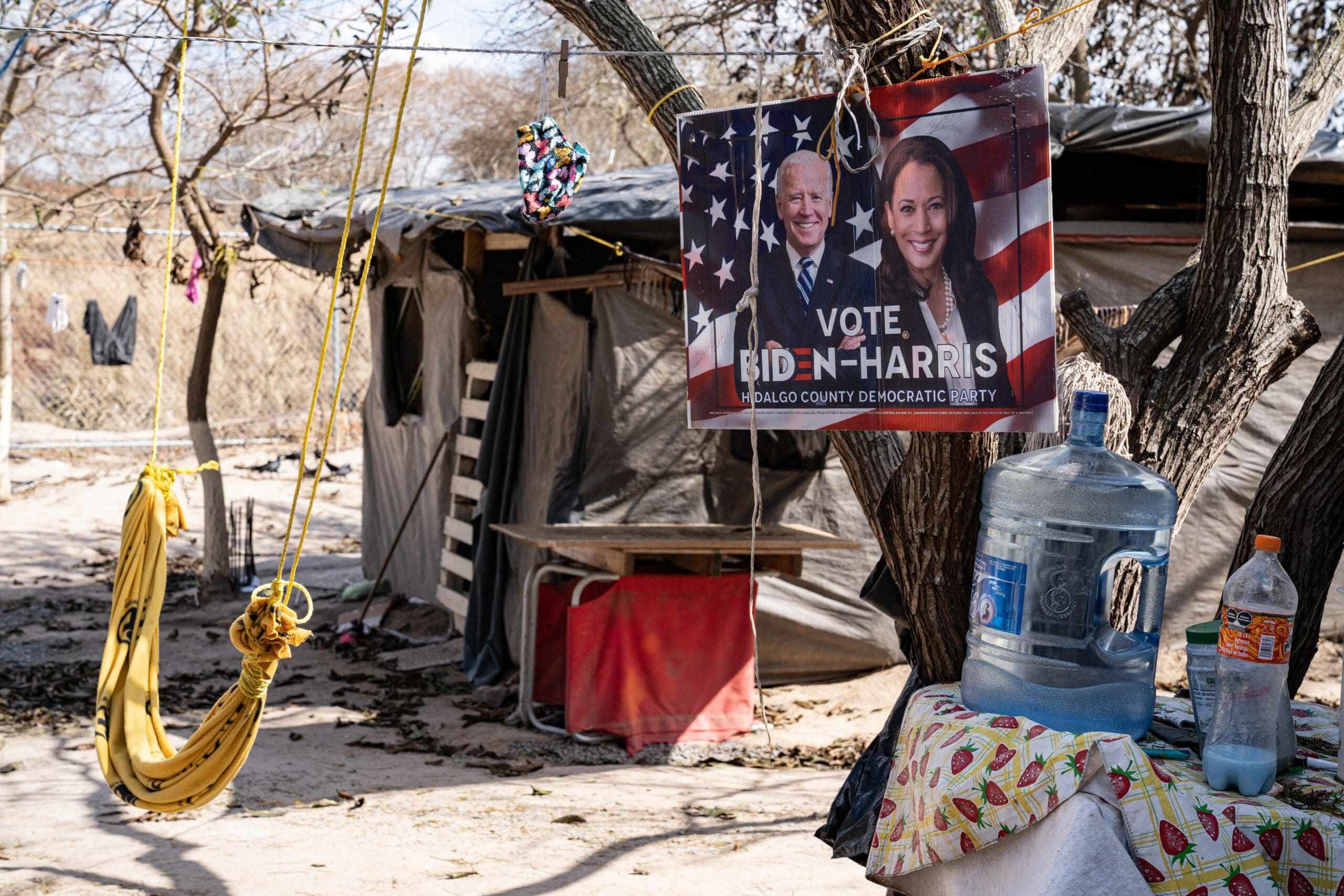
Matamoros, Tamaulipas, Mexico, Feb. 24, a political campaign poster continues to hang in the camp on the day that residents are finally registered to begin their transfer to the U.S.

Yellow “Warning” tape was erected to divide the camp into sections. U.N. representatives went from tent to tent registering each person, documenting the number of people in each tent and providing wristbands to those who had been registered. One person was offered $100 for her wristband.
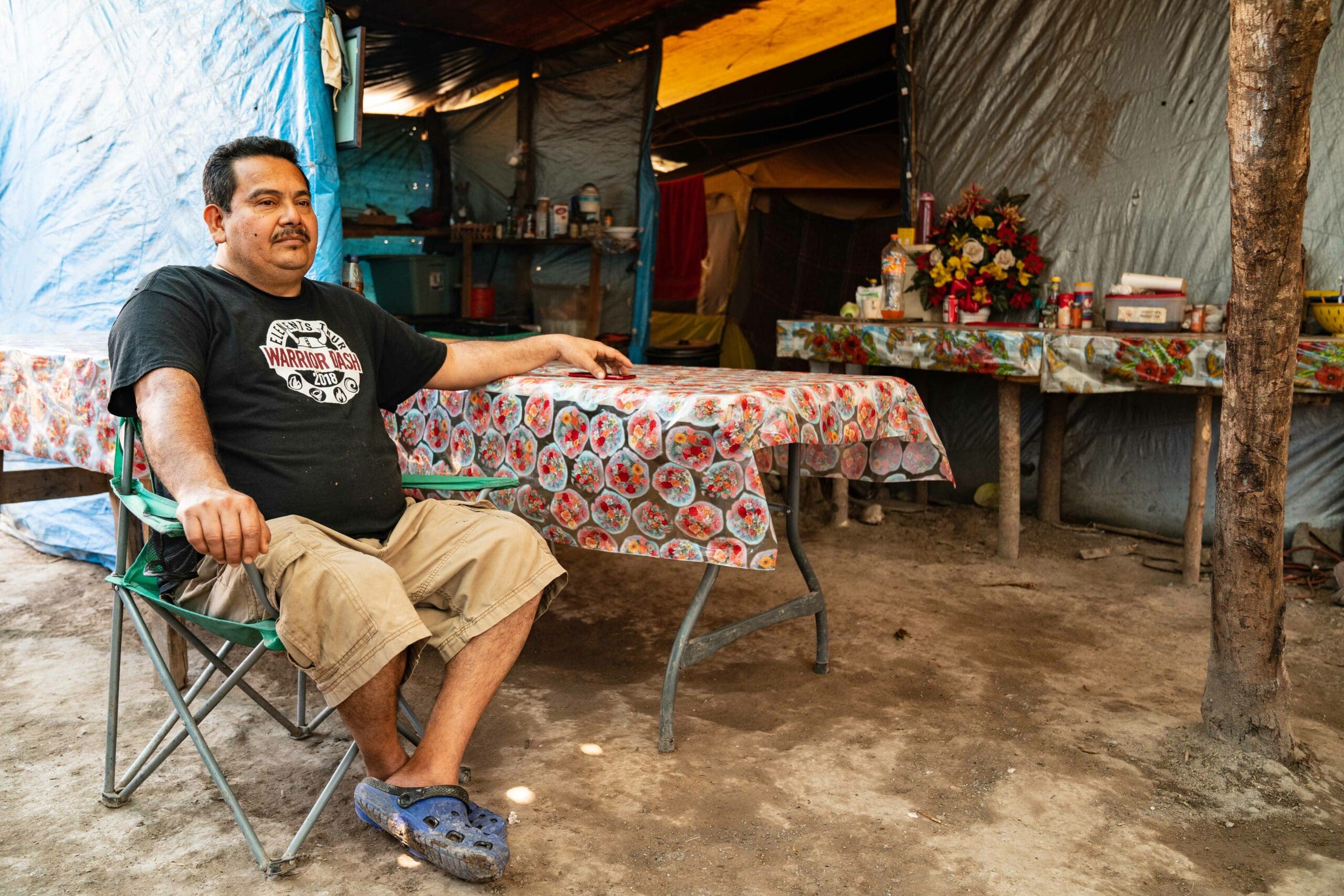
Residents were told to stay inside their tents as they waited for U.N. staff to register them. The U.N.’s Refugee Agency confirmed that there were almost 700 people inside the encampment.

As the residents waited patiently inside their tents, the atmosphere in the camp changed from the desolation many had felt during the extreme cold spell a few days ago to excited anticipation.
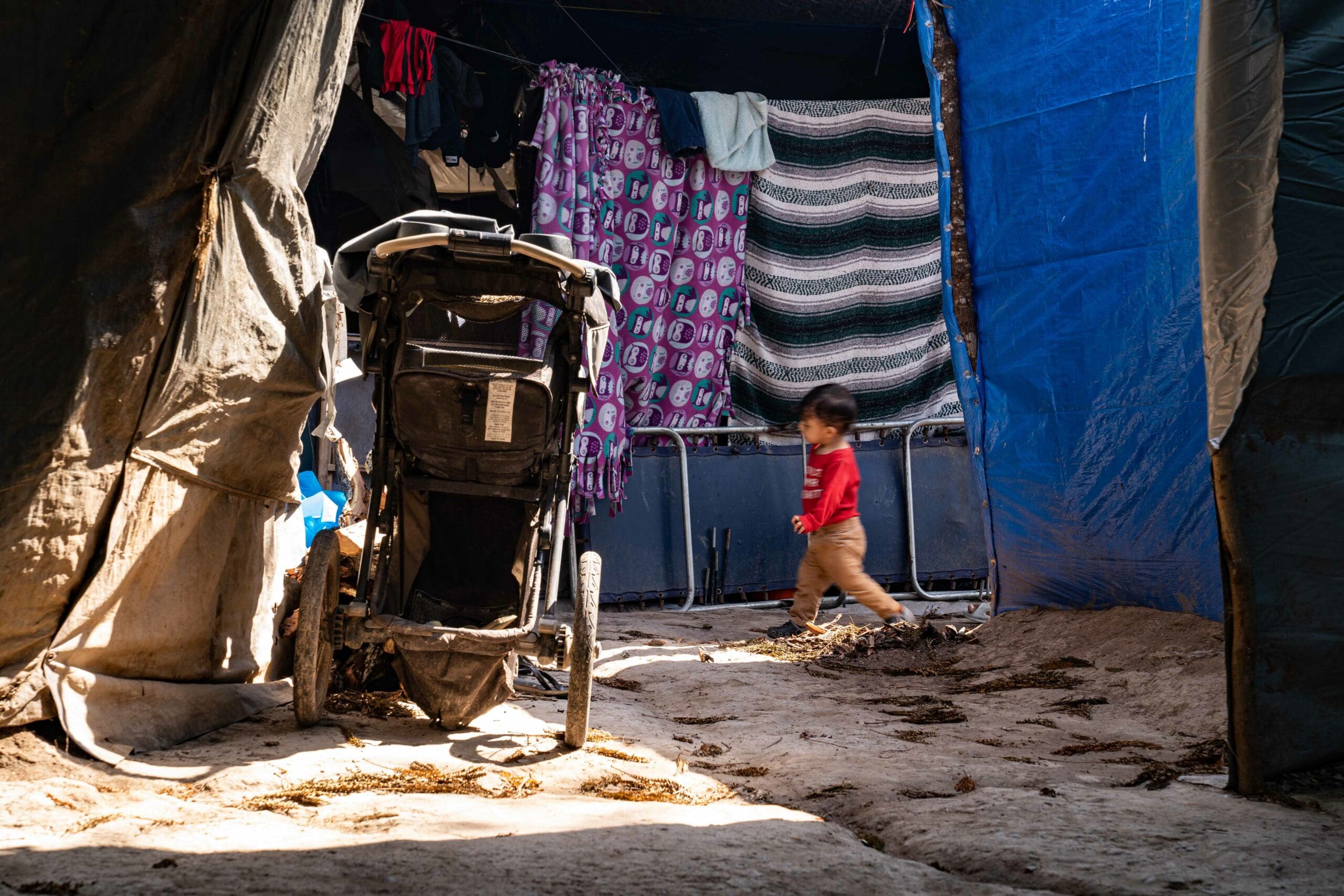
A small child runs backwards and forwards near his tent where he and his family were waiting. The child has a Guatemalan mother and Mexican father who will seek asylum in the United States.
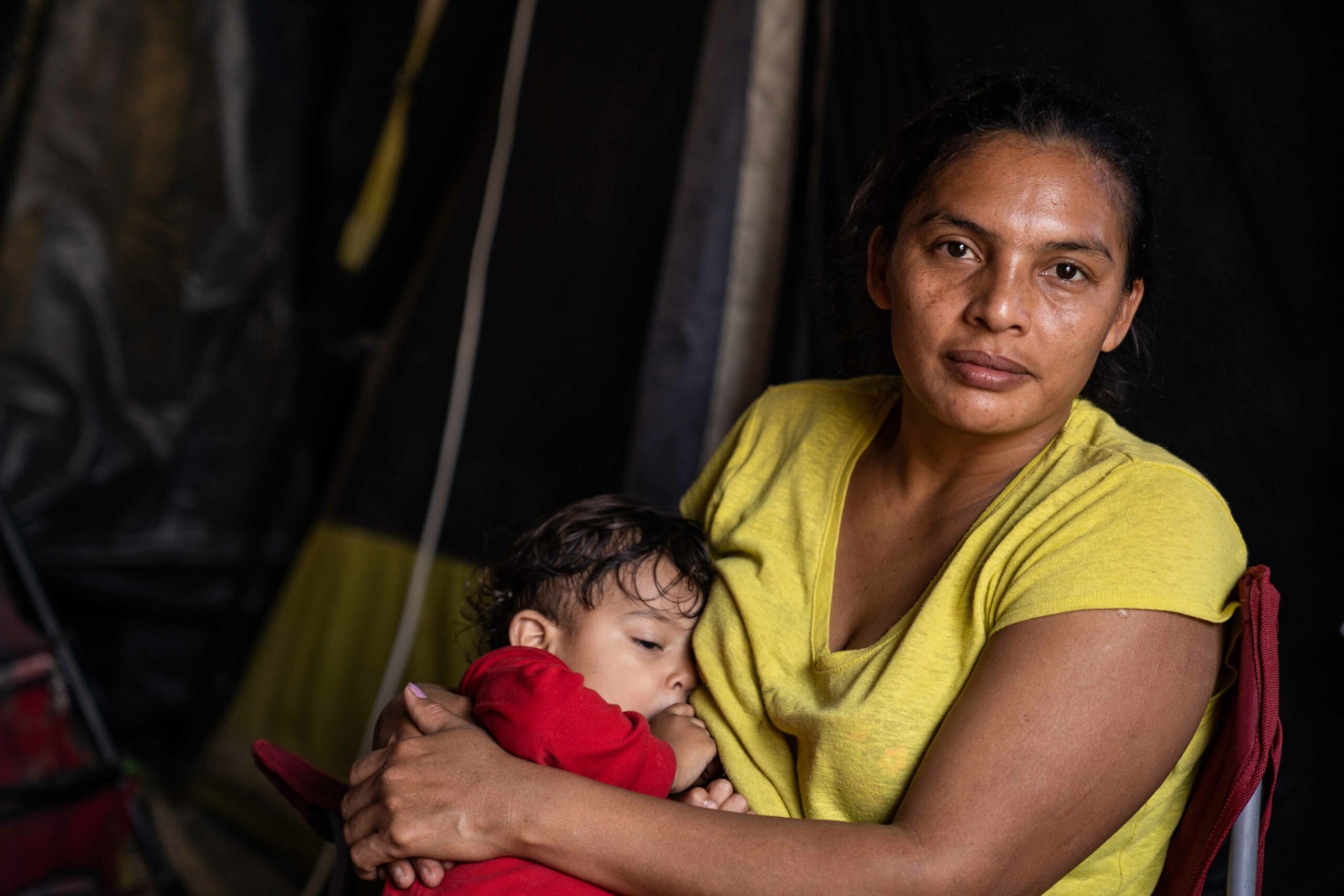
A Guatemalan woman waits inside her tent with her child. Her husband is from Mexico. They are unsure if they will be granted asylum but are waiting patiently for U.N. staff to register them and explain the process.

A woman receives a pedicure while waiting for staff to register her. Many women took the opportunity to pamper themselves, applying their best clothes and makeup, tidying their hair and filing their nails. Living in a tent for many months makes appearances difficult to maintain and yet somehow even more important.

An agent from the National Center for Human Rights interviews a woman in her tent. The Center’s team members were seen across the camp interviewing residents.
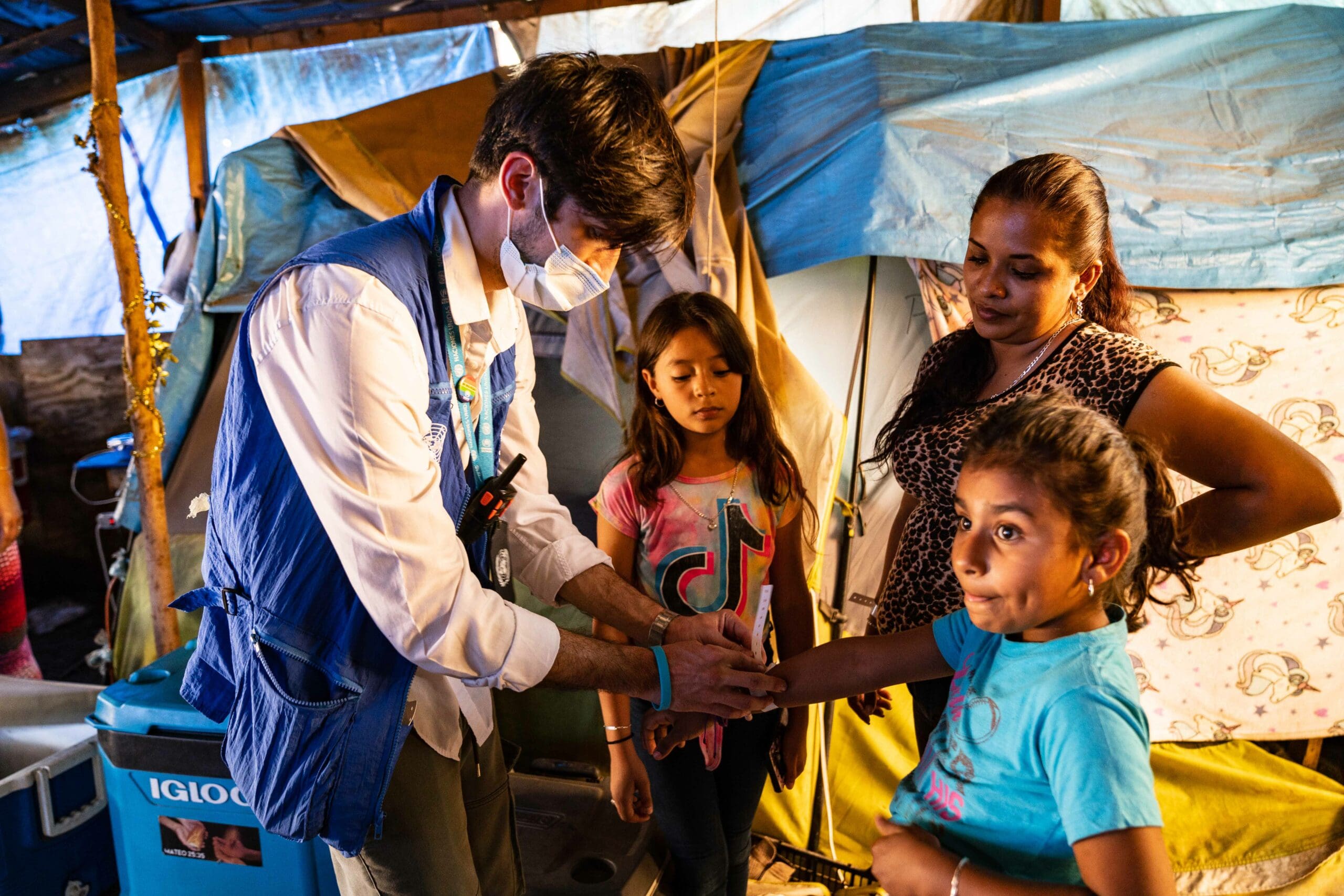
A member of the UNHCR, the United Nations’ Refugee Agency, attaches a wristband to a young Nicaraguan girl’s wrist as her mother and sister watch. The family, which includes three generations of women, have lived in the camp for over a year.

A child who has recently been given her wristband to signify that she has been registered in the camp holds her doll. I asked to see her wristband shortly after the U.N. team had visited her. The word for “wrist” in Spanish is also the word for “doll.” Misunderstanding me, she ran to her tent to find a doll.
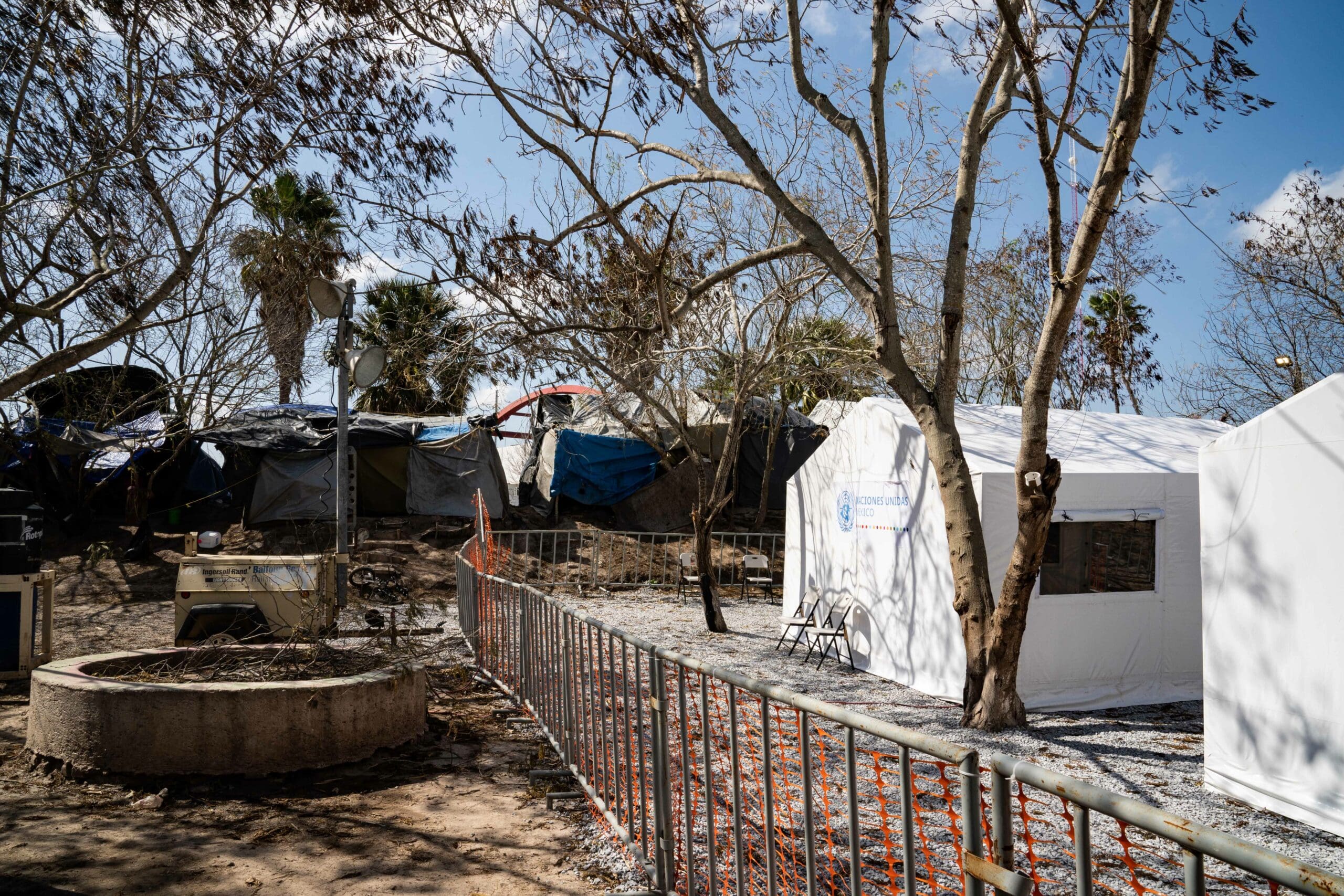
The COVID-19 isolation area is cordoned off from the rest of the camp. Residents are taken in batches to this area and given COVID tests; those who are negative pass to the next stage of the process across the border with the U.S. Customs and Border Protection officers.
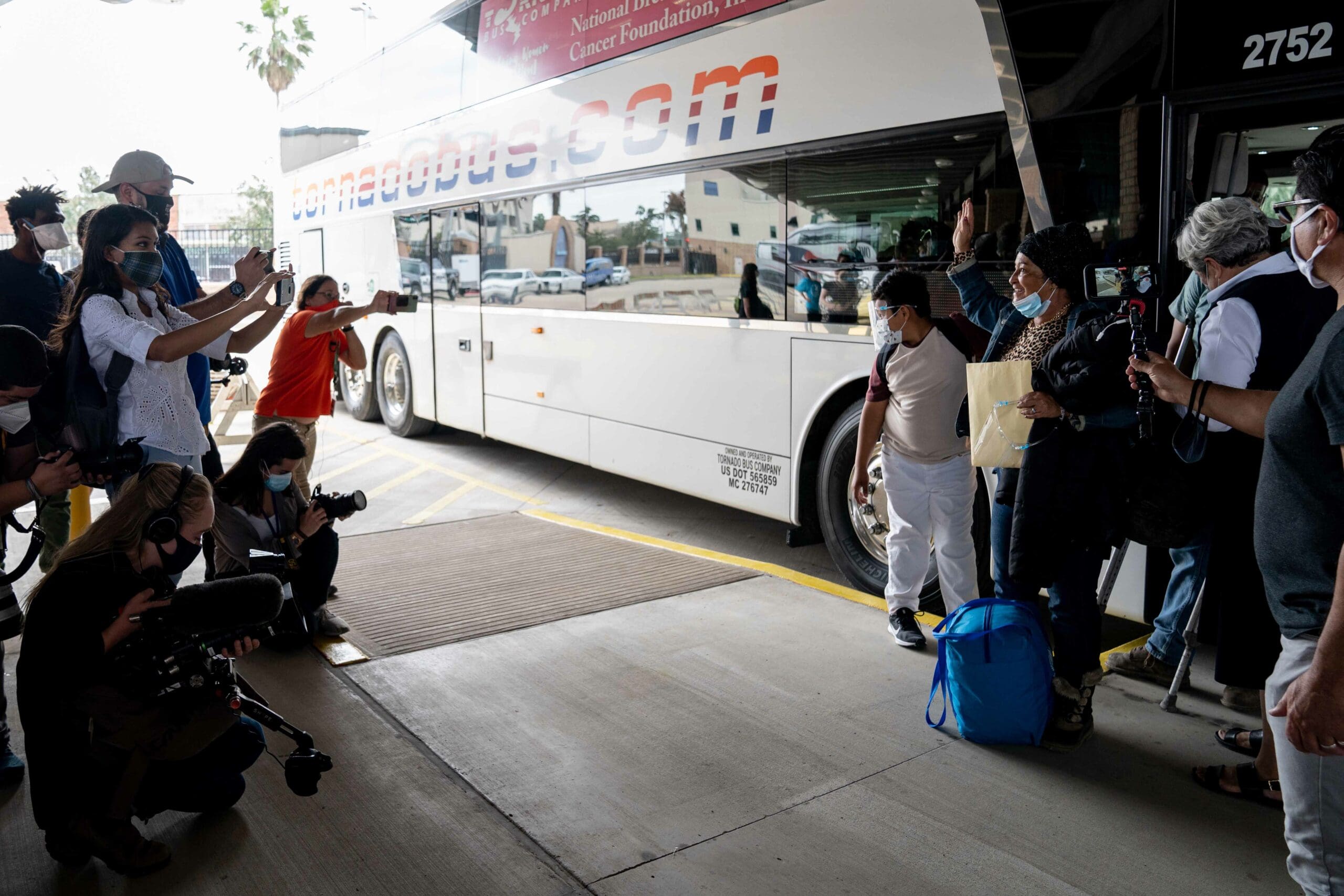
Brownsville, Texas, Feb. 25, a woman steps off the bus in the U.S. She was part of the group of 27 people who were the first to cross over the border. She is greeting a pack of journalists and civil society workers.

A woman wipes a tear from her eye having just stepped off the bus into the Brownsville bus station. She is only a few hundred meters from the tented encampment, which has been home for many people for the past 18 months.

Matamoros, Sept. 24, 2020, Fernanda, a transgender woman, poses next to her tent in the middle of the encampment.
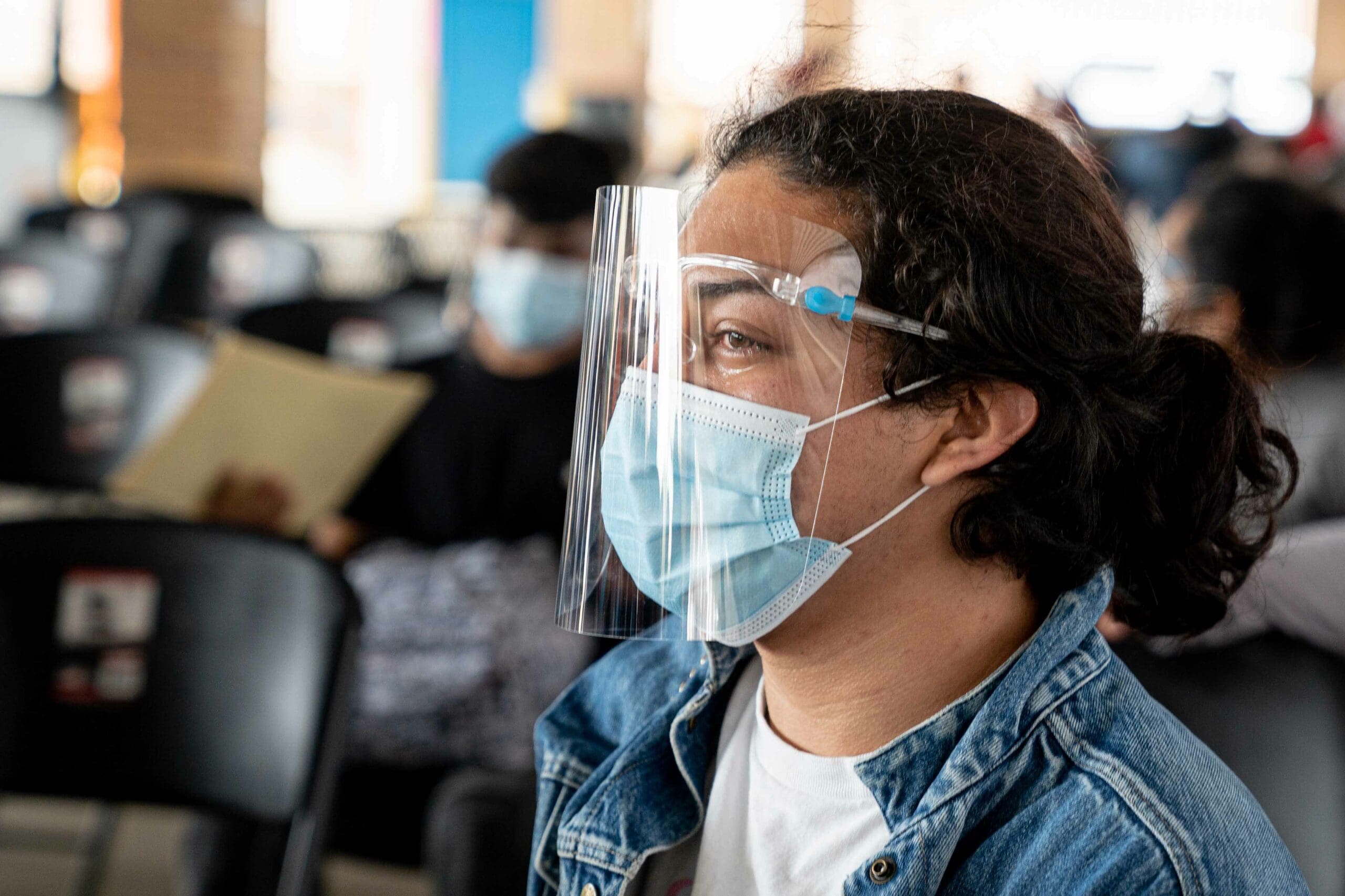
Brownsville, Feb. 25, Fernanda cries with relief as she sits down in the Brownsville bus station. She fled her home country as there is little tolerance for transgender people there. She is hoping for a more understanding community in the U.S.
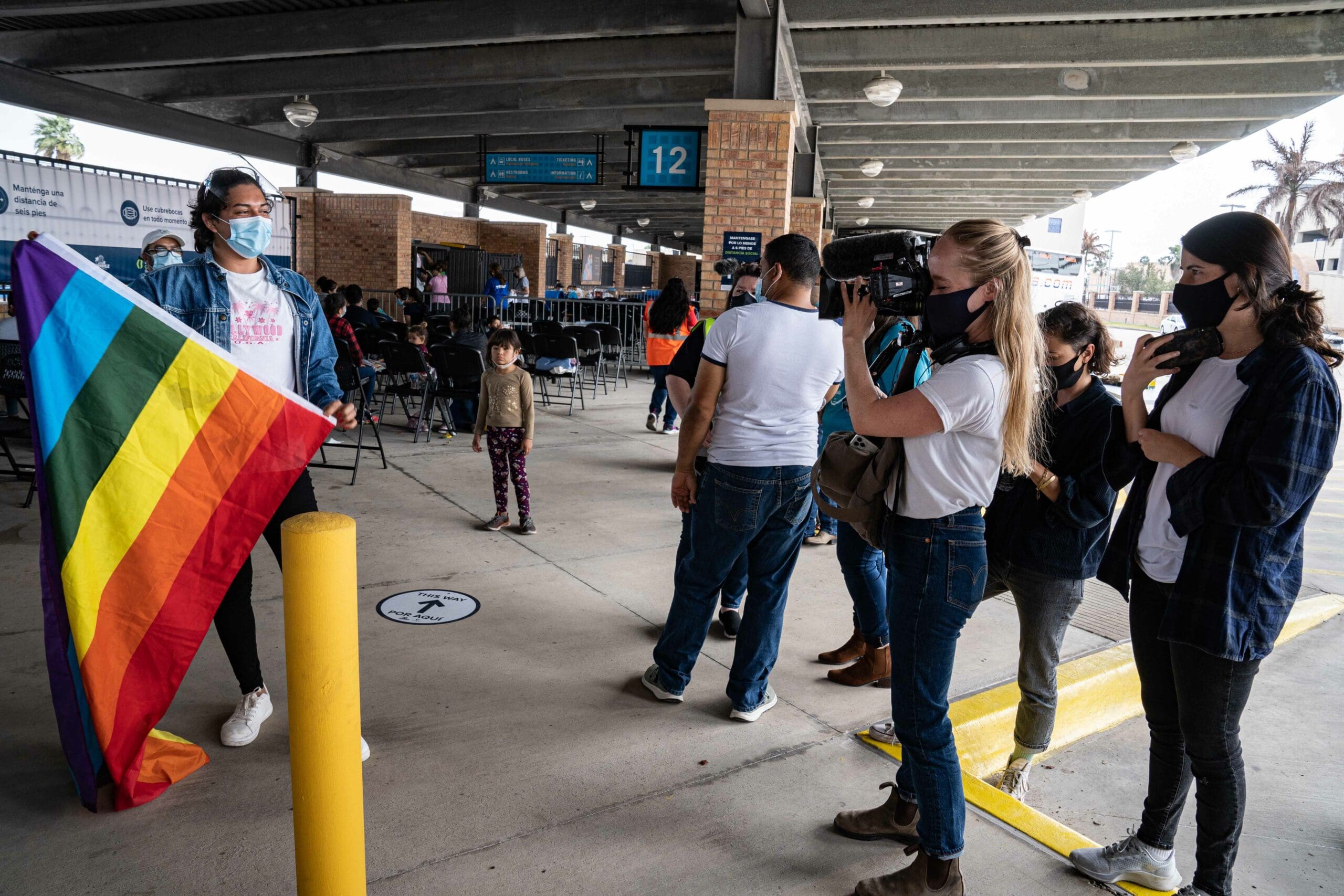
Fernanda holds up a pride flag for the cameras in the bus station.
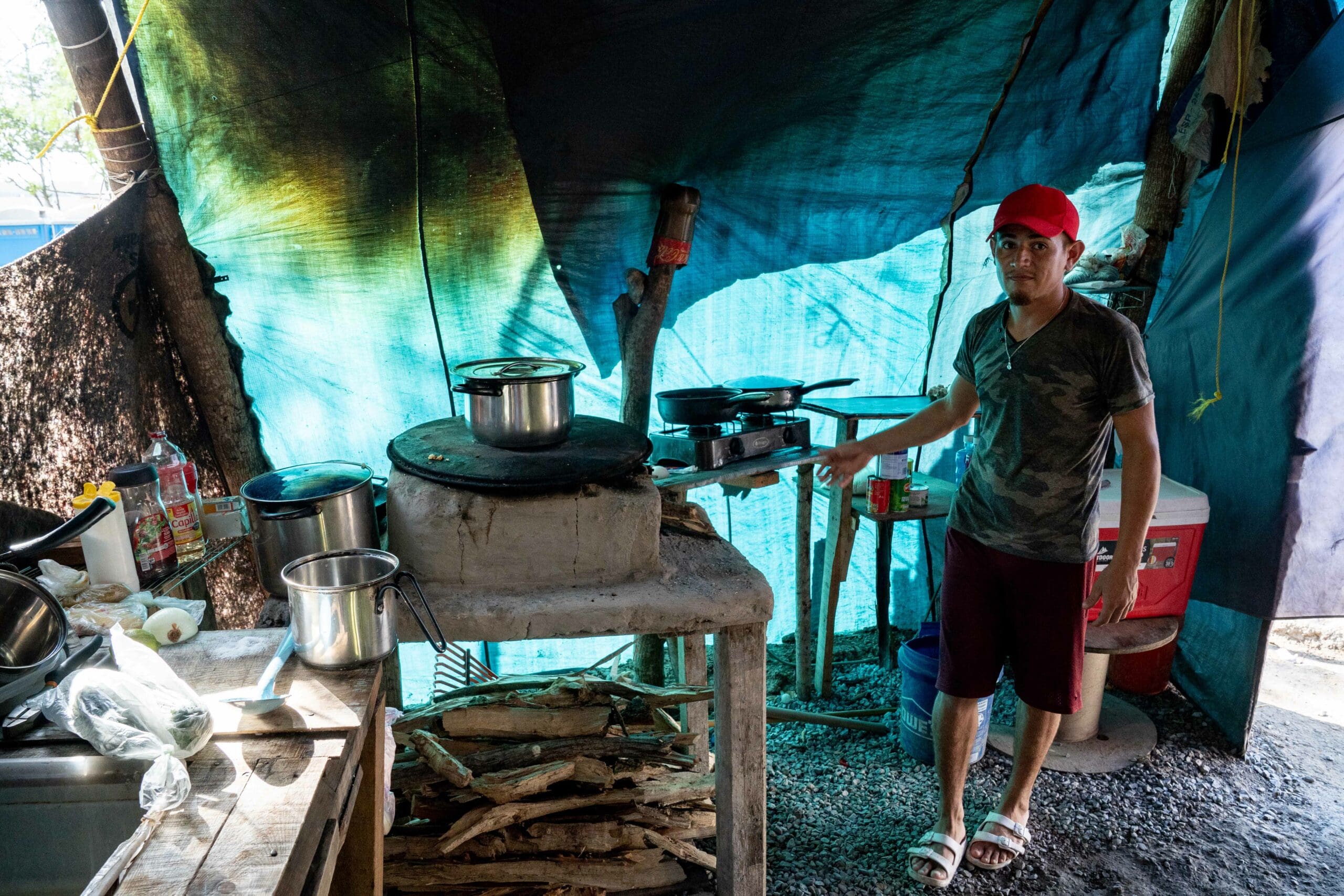
Matamoros, 22 October 2020, Adrian shows his kitchen in a tent on one of the main paths in the encampment. Shortly before this photograph was taken, he had broken down at the stress of being in the camp, where he says he never feels safe or able to trust anyone.

Matamoros, Feb. 25, Adrian’s wife and daughter are surrounded by cameras as journalists ask how they feel about finally being allowed in the U.S.

Adrian’s daughter embraces her father while he talks to journalists and civil society workers about finally being allowed into the U.S.
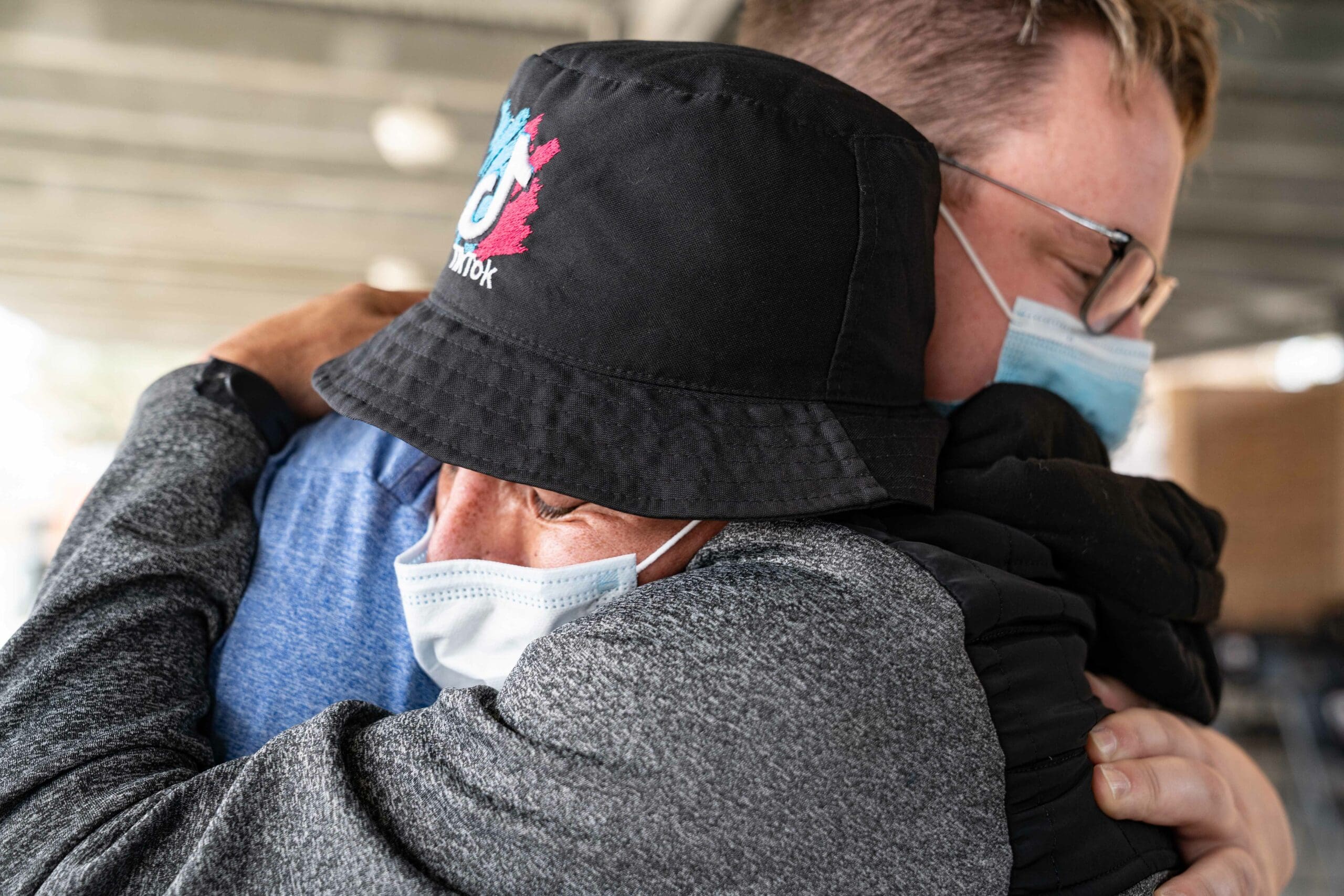
Brownsville, Feb. 25, Adrian holds a civil society worker in a long, tight embrace. Many cried with relief that asylum seekers were finally able to cross the border and attempt to live in homes with four walls and away from the constant threat of organized crime groups and kidnapping.
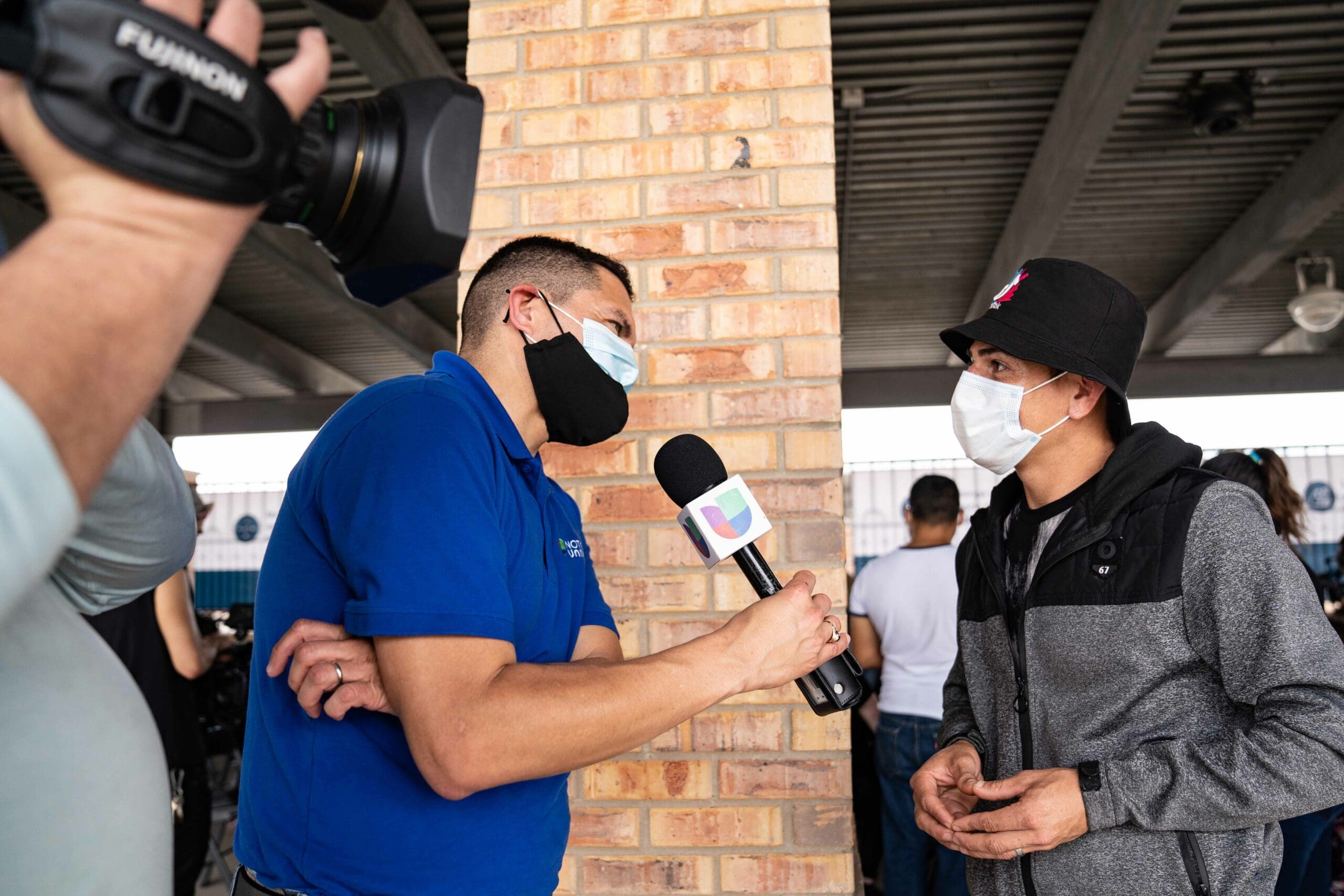
Adrian explains to journalists how he is feeling about finally being allowed to wait for asylum in the U.S.
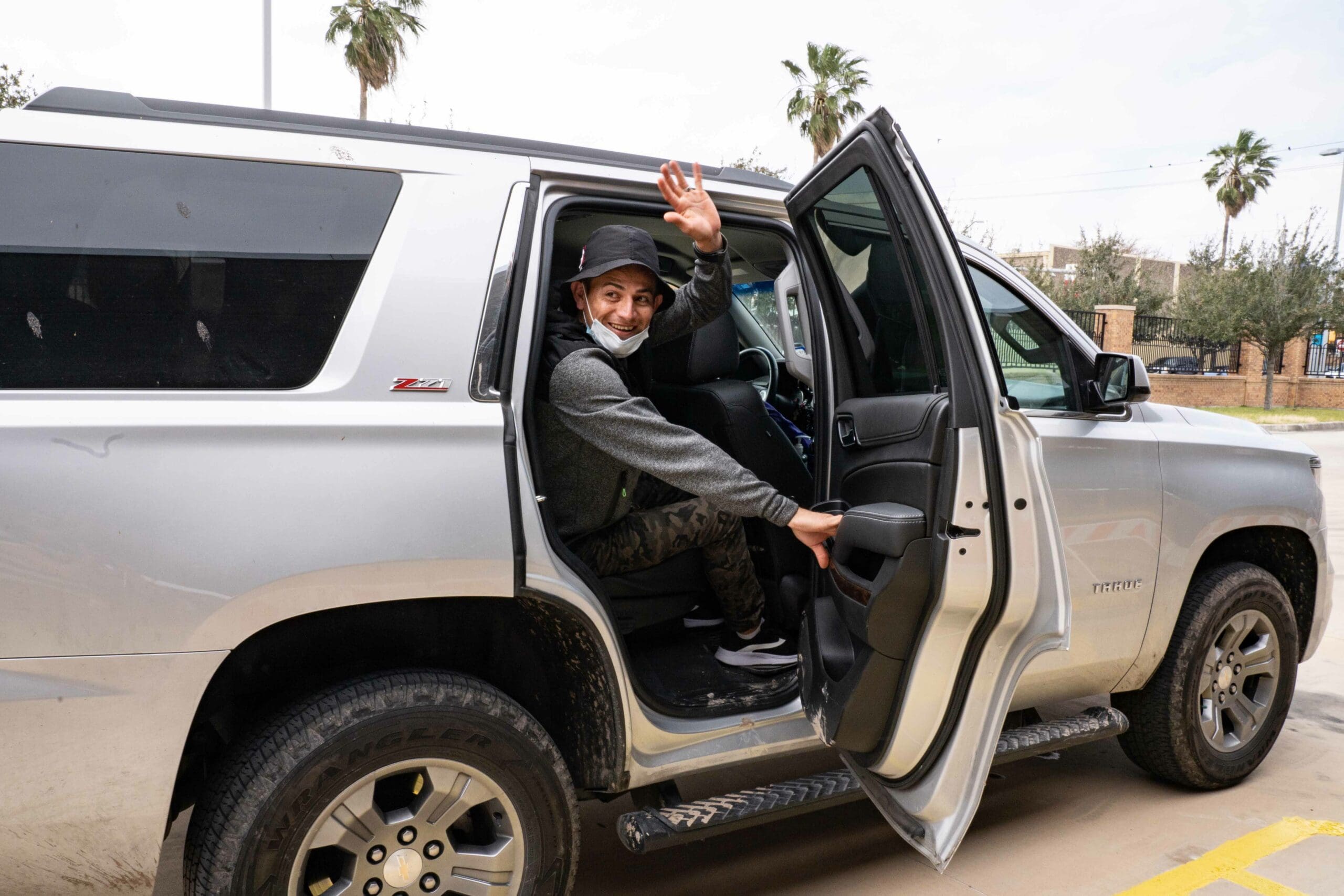
Adrian waves to the cameras as he gets into a car. He had been given shelter by Sister Norma Pimentel, who has worked in the Matamoros camp with migrants from the local area.
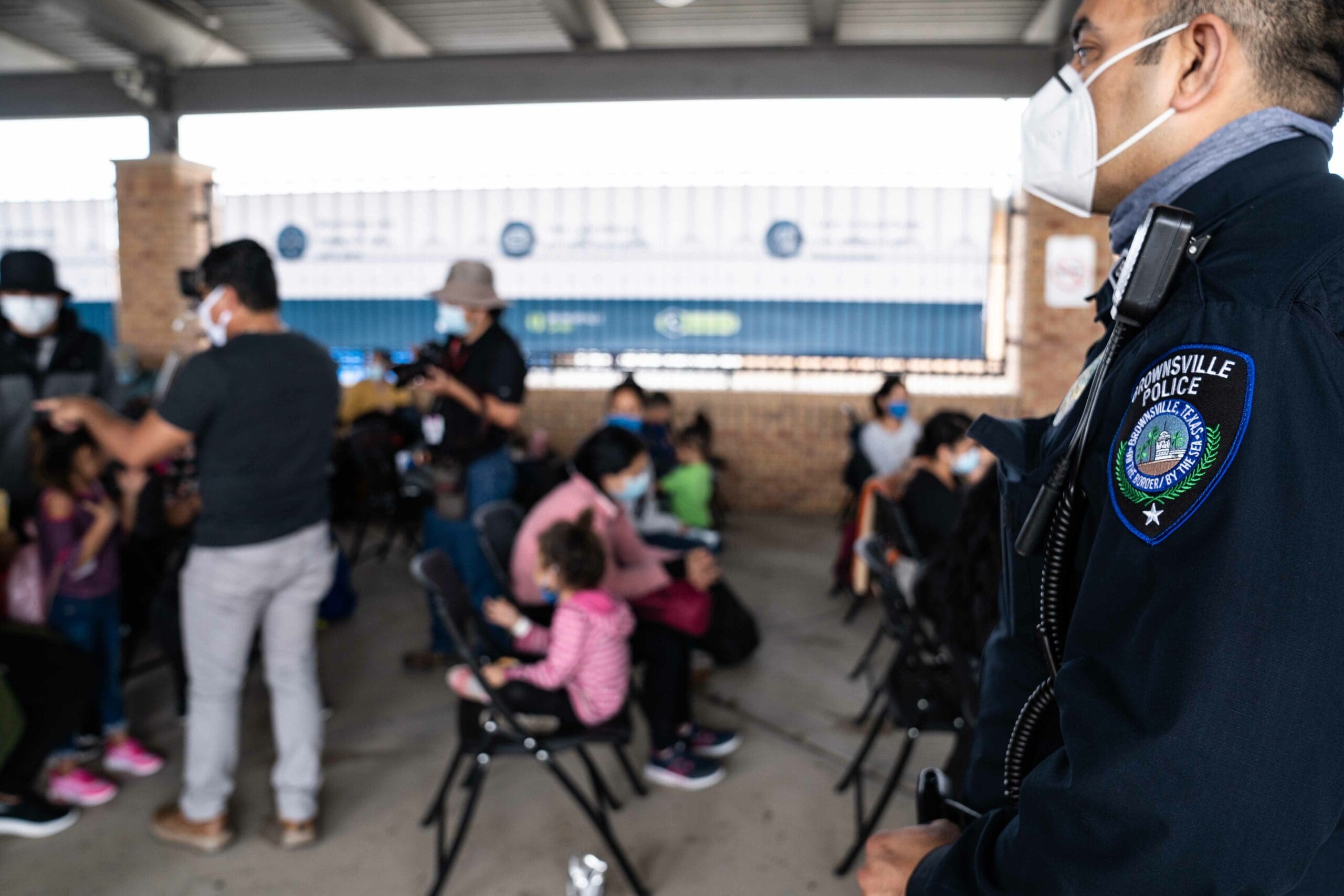
A police officer oversees the arrival and processing of asylum seekers in the Brownsville bus station.
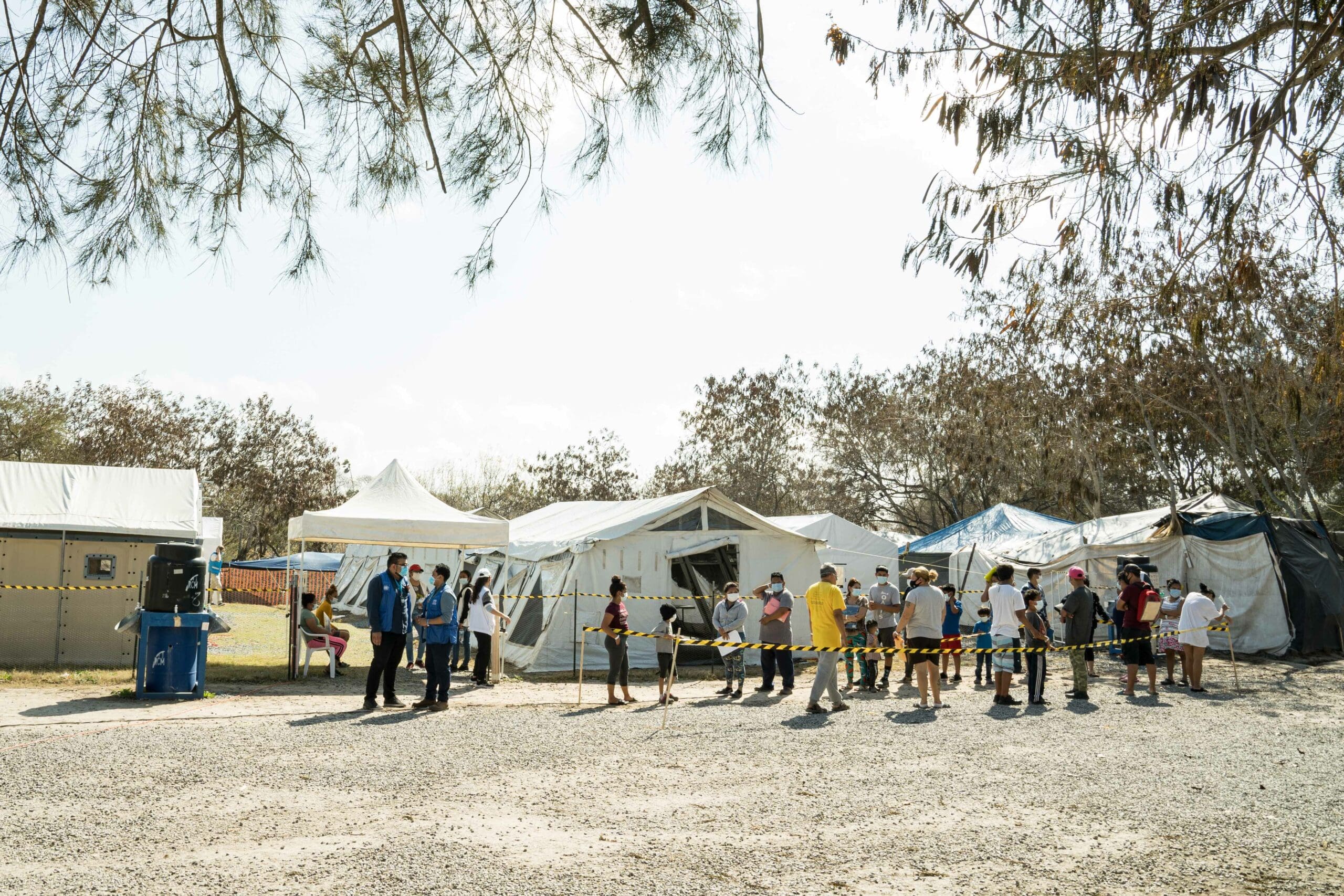
Matamoros, Feb. 24, people in a section of the tented encampment are told to form a queue to have their paperwork and names registered. Each section of the camp was registered by U.N. agencies and other supporting organizations.
All Photographs by Lexie Harrison-Cripps
Copyright Capital & Main 2021